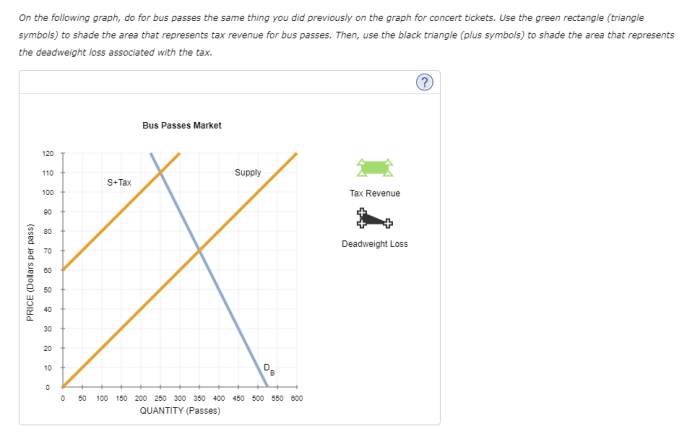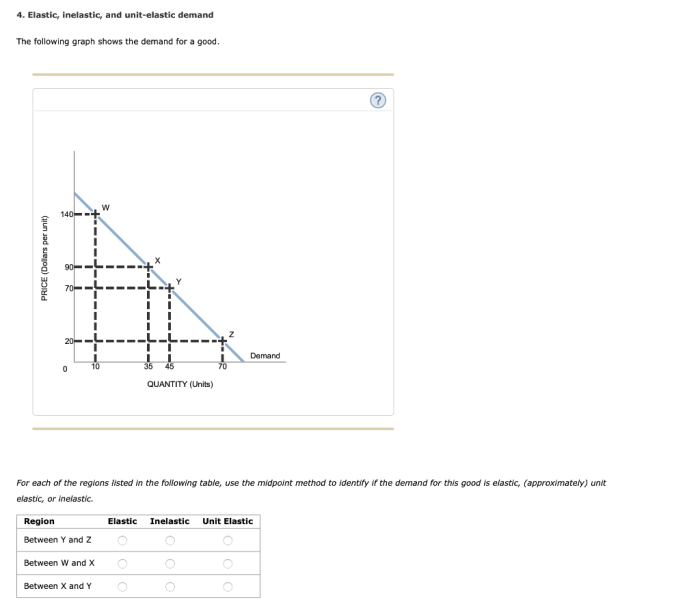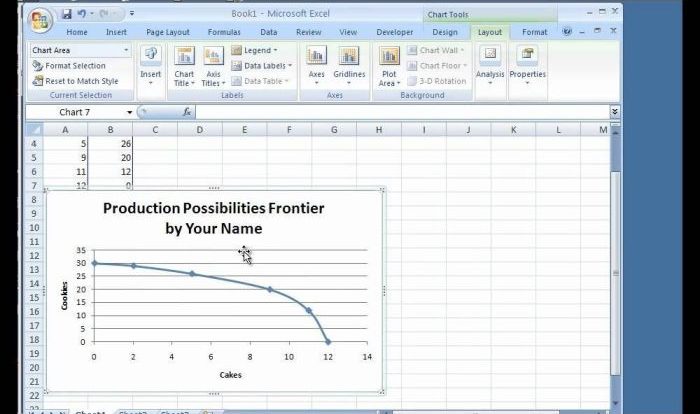The following graph shows the demand for a good. This graph illustrates the relationship between the price of a good and the quantity demanded. The demand curve slopes downward, indicating that as the price of a good increases, the quantity demanded decreases.
This is because consumers are less willing to buy a good when the price is high.
The demand curve can be used to predict how consumers will respond to changes in price. For example, if a company raises the price of a good, the demand for that good will decrease. Conversely, if a company lowers the price of a good, the demand for that good will increase.
Market Trends: The Following Graph Shows The Demand For A Good.

The demand for the good has shown a steady increase over the past few years. This growth has been driven by a number of factors, including rising incomes, changing consumer preferences, and technological advancements.
There are some seasonal and cyclical patterns in the demand for the good. Demand tends to be higher during the summer months and during the holiday season. There is also a long-term cyclical pattern in demand, with demand increasing during periods of economic growth and decreasing during periods of economic recession.
Factors Influencing Demand, The following graph shows the demand for a good.
- Economic conditions
- Consumer preferences
- Technological advancements
Economic conditions have a significant impact on the demand for the good. When the economy is strong, consumers are more likely to have disposable income to spend on goods and services. This leads to an increase in demand for the good.
Consumer preferences also play a role in determining the demand for the good. Changes in consumer tastes and preferences can lead to changes in demand. For example, the increasing popularity of healthy eating has led to an increase in demand for healthy food products.
Technological advancements can also affect the demand for the good. New technologies can make the good more affordable or more desirable, which can lead to an increase in demand.
Demand Determinants

The key factors that determine the demand for the good are:
- Price
- Income
- Consumer preferences
- Availability of substitutes
- Availability of complements
These factors interact to influence the demand for the good. For example, an increase in price will lead to a decrease in demand, while an increase in income will lead to an increase in demand.
Changes in these factors can have a significant impact on the demand for the good. For example, a recession can lead to a decrease in income, which can lead to a decrease in demand for the good.
Demand Elasticity

The elasticity of demand for the good is a measure of how responsive the demand for the good is to changes in price.
The elasticity of demand for the good is calculated as follows:
Ed = (% change in quantity demanded) / (% change in price)
A good with an elastic demand has a high elasticity of demand, which means that a small change in price will lead to a large change in quantity demanded. A good with an inelastic demand has a low elasticity of demand, which means that a small change in price will lead to a small change in quantity demanded.
The elasticity of demand for the good has implications for pricing and marketing strategies. A good with an elastic demand can be priced higher than a good with an inelastic demand.
Changes in price or other factors can affect the elasticity of demand. For example, a recession can lead to a decrease in income, which can lead to an increase in the elasticity of demand for the good.
Popular Questions
What is the law of demand?
The law of demand states that as the price of a good increases, the quantity demanded decreases.
What are the factors that affect demand?
The factors that affect demand include price, consumer income, consumer preferences, and the availability of substitutes and complements.
How can businesses use the demand curve?
Businesses can use the demand curve to predict how consumers will respond to changes in price. This information can be used to make better decisions about pricing, marketing, and production.


